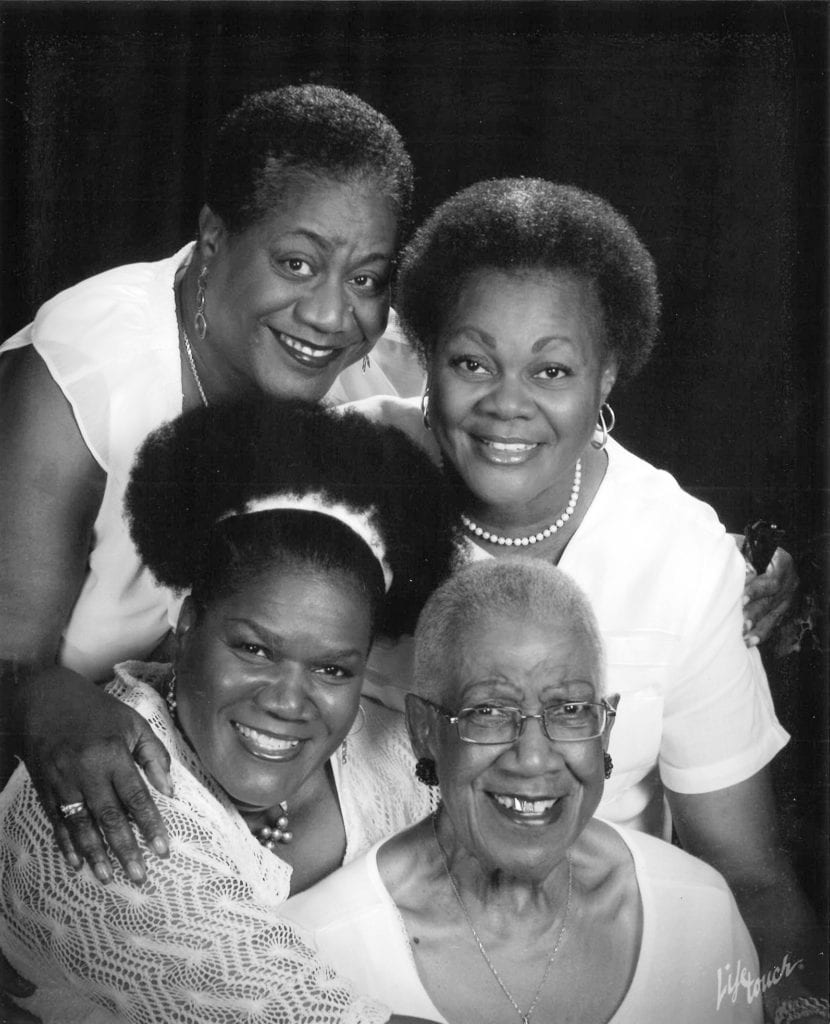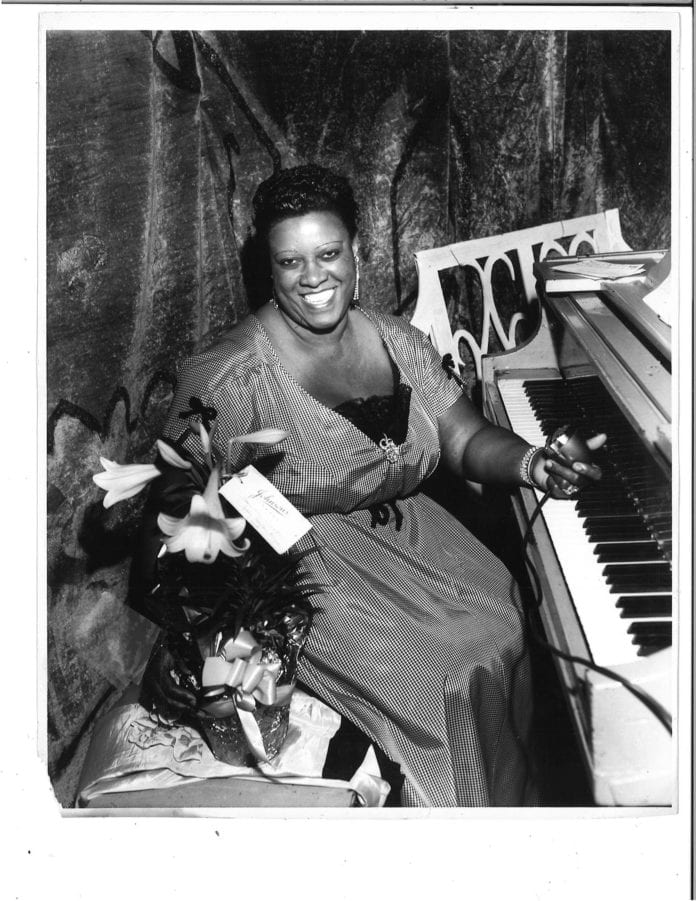Georgia Rodgers Woodruff was a gifted, 22-year-old pianist working under the tutelage of Miss Lucie E. Campbell at Central Baptist Church in South Memphis.
But it was her angelic soprano voice that landed her in King Vidor’s epic African-American movie “Hallelujah” in 1929.
“We called her ‘Money,’ said Woodruff’s granddaughter Erlene Carter. “She was always, and I mean always, dressed to the nines. Our grandmother looked like money, and she was beautiful. Even without make-up, she was stunning, but when you saw her anywhere, that face was camera-ready.”
Carter’s mother, Rubye Woodruff Carter, was Ms. Georgia’s only child. The story of her mother’s breakout movie role was has been part of the family lore as long as she can remember.
Now, Ms. Rubye’s daughters, twins Erlene and Verlene Carter, and older sister, Evelyn Carter, are keepers of the legacy.
“Of course, when I was growing up, I didn’t see my mother as this larger-than-life woman,” said Rubye Carter. “She was just ‘Mama’ to me. But her wonderful story was instilled in me, I guess, from the time I got here.
“This was before I was born, but she played under Miss Lucie Campbell who wrote so
many gospel songs right there at Central Baptist Church. One of Miss Campbell’s songs, “My Savior,” has my mother’s name on it.
“Miss Campbell would get to church and whisper to my mother, and she would play her songs on the piano. My mother was the first to play one of Ms. Campbell’s most popular compositions, ‘Touch Me, Lord Jesus.’”
The three granddaughters all know the story of how their grandmother was discovered in Memphis. King Wallis Vidor, an accomplished screenwriter and film director, set out in 1928 to make a blockbuster “race film” using an “all-black” cast.
He received a Best Director Academy Award (Oscar) nomination for “Hallelujah.” It was the first time a “white film director” endeavored to work with an entirely African-American cast.
He was nominated five times for a Best Director Oscar, and won eight international film awards. Vidor received an honorary Oscar to cap the end of a stellar career.
“A movie like that in the early 1900s was quite a spectacle,” said Verlene Carter. “Daniel L. Haynes and Nina Mae McKinney were singing and acting sensations of their day who got the leading roles. Other talented actors and actresses played supporting roles – dancing, singing, and performing choreographed movement. For its time, “Hallelujah” as a dramatic, musical film production was quite an accomplishment.”
Rubye Carter can remember her mother talking about the whole experience of filming the movie.
“Of course, it was before I was even born, but I remember Mother talking about how it was just a group of young people having fun,” she said. “Nina Mae McKinney was only 16 years old at the time. But they were all young, going to the set every day to sing and dance and congregate. It was great fun. That’s what mother talked about when she recalled the experience.”
Not only was Georgia Rodgers Woodruff musically gifted; she was a brown-skinned beauty just waiting to be discovered by Hollywood. But the happenstance seemed quite accidental.
The major characters for leading roles had been cast, and some scenes had been shot up north. Vidor determined that various Southern venues would lend authenticity to the production.
Eva Jessye, a Harlem Renaissance star gaining international fame as a choral conductor, was “Hallelujah’s” music director. She also was music director for Ira Gershwin’s production of “Porgy and Bess.”
The production was moving down South for a few weeks to film. The soprano chosen for the film refused to come South because of all the racial violence and hatred she read about.
Jessye had quite a challenge.

(Courtesy photo)
Verlene, the other twin granddaughter, picks the story up from there.
“When Eva Jessye arrived in Memphis on the train, she asked some of the porters if they knew of a soprano who could be in the film,” Verlene said. “Someone told her to go to Central Baptist Church. She heard my grandmother, and asked her to come over to the hotel where the cast was staying.
“It was the old Traveler’s Inn. Vidor was staying at the Peabody, but the rest of the cast couldn’t stay at the Peabody at that time. Grandmother sang for them, and she was hired right on the spot.
“Scenes were shot on Porter Street near the present-day location of LeMoyne-Owen College. There was a bayou over there where the baptismal scene was shot. Many local extras in the community were used.
“There was singing, shouting, and choreographed movement as well as acting throughout the movie. For the plantation scenes, Wilson Brothers Plantation over in Arkansas was the actual setting.”
After local filming, the cast went to Hollywood to wrap up final shooting. Woodruff spent several weeks there shooting her role.
“My grandfather, William O. Woodruff, told her to come home, and she did,” said Evelyn Carter. “My grandmother returned home and continued playing in her church as well as many other prominent events and venues.
“People always remembered her as the movie actress. She played the organ at Metropolitan Baptist Church, just sitting on the organ in all that ‘fabulousness’ wearing fancy hats.”
Georgia Rodgers Woodruff lived with her family at 535 Alston Ave., off of Mississippi Boulevard in South Memphis. She taught school in Arkansas. Later, she worked at Woodstock High School in Shelby County and retired while teaching at Graceland Elementary School in Whitehaven.
She was 75 when she died in Memphis in January 1981. Her daughter, Rubye Carter, also is a retired educator, living in South Memphis.



